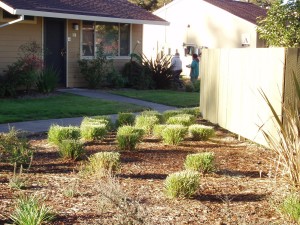Go Native, Save Water: Xeriscape Gardening
 The information age has brought with it a flood a varying techniques in the fields of landscaping, gardening and ecological design. In keeping with the sustainable nature of the best of them, xeriscape gardening is defined by its optimal use of a minimal amount of water. This approach to gardening has been developed in the arid regions in the world, chiefly in the American mid-west, as a natural response to the climate. Xeriscape is most effective when the need for supplemental irrigation is eliminated and the design of the garden promotes symbiotic relationships that provide benefits. Environmental conservancy is xeriscape gardening’s top priority, but aesthetic design has received as much consideration. At its best, xeriscape becomes a melding of both utility and beauty.
The information age has brought with it a flood a varying techniques in the fields of landscaping, gardening and ecological design. In keeping with the sustainable nature of the best of them, xeriscape gardening is defined by its optimal use of a minimal amount of water. This approach to gardening has been developed in the arid regions in the world, chiefly in the American mid-west, as a natural response to the climate. Xeriscape is most effective when the need for supplemental irrigation is eliminated and the design of the garden promotes symbiotic relationships that provide benefits. Environmental conservancy is xeriscape gardening’s top priority, but aesthetic design has received as much consideration. At its best, xeriscape becomes a melding of both utility and beauty.
The Principles of Xeriscape
As conceived by Denver Water, xeriscape gardening’s most revered proponent, these seven guiding principles provide the foundation for all considerations within the field. Each principle holds an entire discipline within itself, which means that there is always more to learn and improve upon in this field.
- Planning and Design are the cornerstones of effective gardening, which requires careful attention to your specific environment.
- Soil Management is about knowing what nutrients your selected plants need and what nutrients are available in the soil. Composting is a great way to reinvigorate malnourished soil.
- Plant Selection is an integral part of xeriscape gardening. Thousands of species exist in arid conditions, each with benefits and beauty to offer.
- Turf Minimalism is crucial because the water needs of most grass lawns makes them impractical for dry climates.
- Diligent Irrigation may be the reason you’re interested in xeriscape gardening to begin with. Water is an invaluable resource and appropriate use of it is essential to environmental conservancy.
- Mulch can be composed of several materials such as leaves, wood chips, pine needles and bark. It is spread over the surface of the soil to help with water retention, fertility, prevention of erosion, and reduction of weed growth.
- Maintenance in the form of weed pulling, mulching, and general upkeep should be combined with constant observation to check if your garden layout is working to its full potential.
The Benefits of Xeriscape
- Reduced Water Consumption is both the key aspect of xeriscape gardening and a great benefit of it. It means using less water and making better use of it. Not only will this save you money, but you will be helping your community and environment as well. Re-appropriating rainwater can help you prevent evaporation and runoff, and your garden’s layout can be optimized for better use of it.
- Less Maintenance is required from a xeriscape garden. Much less fertilizer is used, which helps urban runoff pollution, lawn mowing becomes nigh unnecessary, and simple irrigation systems can handle all of your watering needs.
- Pest Control is an added benefit of a really well thought out garden layout. Certain xeriscape friendly plants ward off insects, while prickly cacti do the same for intrusive mammals. Plant selection also enables you to create a sanctuary for desirable birds and insects.
- Property Values Rise when you drought-proof the terrain around your home. Likewise, the design opportunities available to xeriscape can make for some exquisite gardens.
There are an abundance of tips and tricks available for do-it-yourself xeriscape gardening, but expert consideration reaps the true benefits of the art form. Xeriscape specialists develop an uncanny ability to read an environment and discern its possibilities. With a little help, and dedication to the sustainability principles of xeriscape you could be looking at a lower water and power bill, a productive and efficient garden, and a beautiful area in which to relax.
Tagged: flowers, garden, gardening, landscaping, low-maintenance, Sonoma County, summer, watering, xeriscape
Both comments and pings are currently closed.





